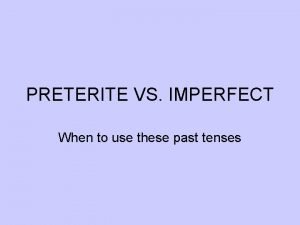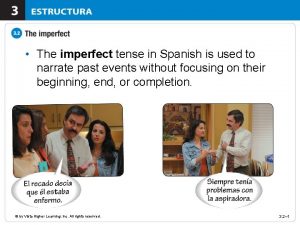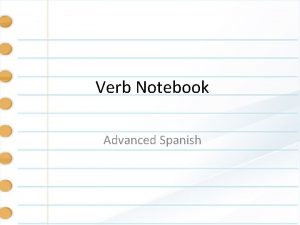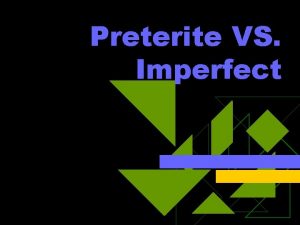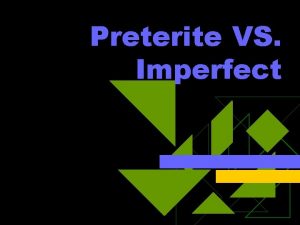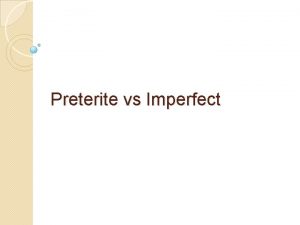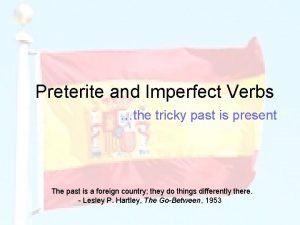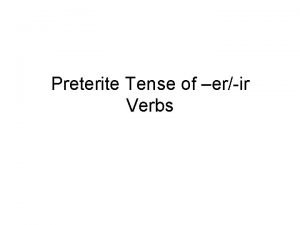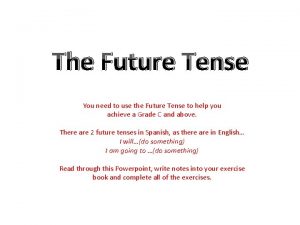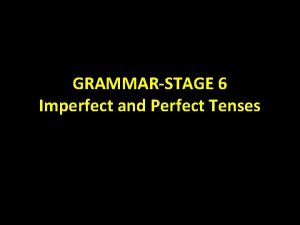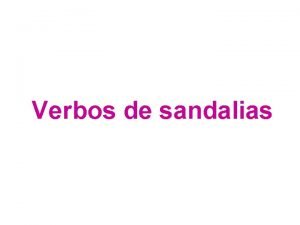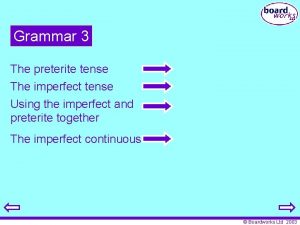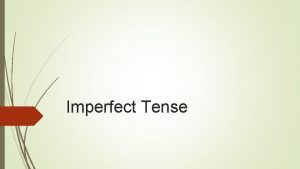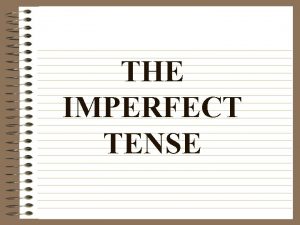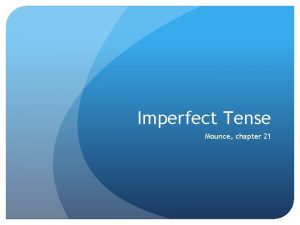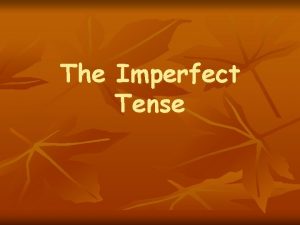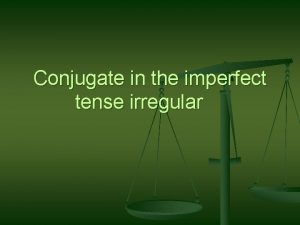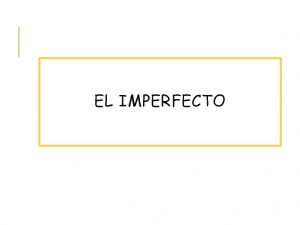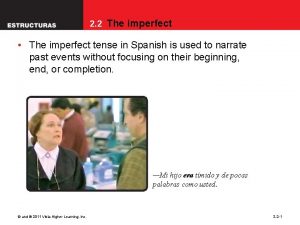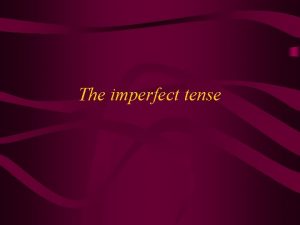THE IMPERFECT TENSE The imperfect tense in Spanish
















- Slides: 16

THE IMPERFECT TENSE

The imperfect tense in Spanish is used to • describe things that used to happen • places, objects and people (in the past) • give background description that is secondary to the main action.

It is formed by taking the stem of the infinitive and adding the endings as follows: -AR verbs e. g. hablar Yo hablaba Nosotros hablábamos Tú hablabas Vosotros hablabais Él/ella/usted hablaba Ellos/ellas/ustedes hablaban

-ER verbs E. g. comer Yo comía Nosotros comíamos Tú comías Vosotros comíais Él/ella/usted comía Ellos/ellas/ustedes comían

-IR verbs E. g. vivir Yo vivía Tú vivías Él/ella/usted vivía Nosotros vivíamos Vosotros vivíais Ellos/ellas/ustedes vivían

Guess the good news?

There are only three irregular verbs in the imperfect!

SER ERAS ERA ÉRAMOS ERAIS ERAN IR IBAS IBA ÍBAMOS IBAIS IBAN

VER VEÍAS VEÍAMOS VEÍAIS VEÍAN

The imperfect The preterite The imperfect sets the scene in the past and the preterite ‘crashes’into it, with a single action.

• Things that used to happen Cuando era joven me gustaba ir al parque todos los días. When I was young I used to like going to the park every day.

• Places, objects and people (in the past) La chica era alta, tenía el pelo largo y llevaba gafas. The girl was tall, had long hair and wore glasses.

• Background description that is secondary to the main action (in the past) Eran las doce de la noche. Hacía viento y llovía. El asesino entró en la casa con una pistola. It was midnight. It was windy and it was raining. The murderer entered the house with a pistol.

Special uses for the imperfect: • Ser, when it’s time telling: Era la una. Eran las ocho y media. • Those other uses of those special verbs: SABER, to know a fact/information Yo sabía la respuesta. (I knew the answer). PODER, to be able Ella podía viajar en Europa. (She was able to travel in Europe).

Special uses for the imperfect: • …other uses of those special verbs: CONOCER, to be familiar with a person, place Ustedes conocían a Carmen. (You all knew Carmen). TENER, especially tener expressions Ellas tenían frío en Alaska. (They were cold in Alaska).

Special uses for the imperfect: • …other uses of those special verbs: QUERER, to wish, to want, to love Yo quería a Antonio Banderas. (I used to love Antonio Banderas).
 Anoche preterite or imperfect
Anoche preterite or imperfect The imperfect show
The imperfect show Conjugating verbs in spanish
Conjugating verbs in spanish Preterite vs past tense
Preterite vs past tense Conocer preterite vs imperfect
Conocer preterite vs imperfect Imperfect key words
Imperfect key words Difference between imperfect and preterite spanish
Difference between imperfect and preterite spanish Preterite and imperfect
Preterite and imperfect Preterite vs imperfect conjugations
Preterite vs imperfect conjugations Vivir preterite tense
Vivir preterite tense Spanish packet answers
Spanish packet answers Tenses chart
Tenses chart What is the future tense of be
What is the future tense of be Latin tutorial imperfect tense
Latin tutorial imperfect tense Preterite conjugations spanish
Preterite conjugations spanish Preteritum svenska
Preteritum svenska Abas spanish
Abas spanish
